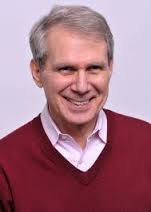Goldman Says Older U.S. Workers Poised for a Comeback

©2015 Bloomberg News
NWBXGQ6JTSER
(Bloomberg) — Older U.S. workers are defying expectations, and international trends, when it comes to their labor force involvement.
Americans are living longer, are less likely to have pension plans, and are in better health further into old age — yet a long-running uptrend in 55-64 year old labor force participation rates has stalled in the U.S. since 2008, even as it’s persisted in most other advanced industrial nations.
It’s not clear why Americans are bucking the trend toward later retirement visible elsewhere, but economists at Goldman Sachs Group Inc. suspect it has to do with the lagged effects of deep job losses during the Great Recession.
What’s going on with older workers matters to the broader labor market. As the population ages it’s depressing how many people work or are looking for a job. Goldman projects that if the uptrend in 55-64 year old labor market participation resumes, it could soften the overall decline in the participation rate, which would in turn slow the drop in the level of unemployment.
“The difficult job market likely depressed participation among older American workers, but the later-retirement trend is likely to resume eventually,” Goldman Sachs economist David Mericle wrote in an Oct. 14 note. “This should partially offset the impact of population aging on the aggregate participation rate.”
Mericle’s confidence that older Americans are going to start working in greater numbers is rooted in international data. While participation rates for 55-64 year olds have continued to accelerate in most of the U.S.’ peer nations, the rate actually declined in the U.S. between 2008 and 2014, based on the most up-to-date Organization for Economic Cooperation and Development data.
Between those dates, the participation rate edged down by 0.4 percent in the U.S., OECD data show. Of countries covered by that data, only Russia, Greece, South Africa and Latvia joined the U.S. in posting a decline, while countries including Italy, France and Germany saw double-digit increases.
After examining the relationship between unemployment and participation among older workers in 19 OECD countries, Goldman’s analysis finds that participation among U.S. men in that age group is a few points lower than today’s unemployment rate and life expectancy would imply, which means that there is probably room for an increase. Female trends probably differ by country too much for a relevant comparison.
Not everyone agrees that the uptrend is poised to resume. Craig Copeland, a senior research associate at the Employee Benefit Research Institute in Washington who has researched older workers’ participation rates, doesn’t expect the trend to resume absent a major change in the economy.
“Economic conditions haven’t improved so much that it is easy for workers to easily get a well-paid job,” Copeland wrote in an e-mail. “It will likely stay at its current trend unless there is a significant downturn in the economy or a major up- turn, drawing back experienced workers.”
Factors unique to the U.S. are also at play in reducing older-worker labor market involvement compared to peer countries. For instance, Mericle cites the Affordable Care Act, which the Congressional Budget Office expects to push down the participation rate. What’s more, countries like Italy have recently reformed their pension systems, increasing retirement ages for some workers.
Such factors are unlikely to fade even as the labor market tightens, and the Goldman analysis acknowledges that it may miss some of those “confounding factors.”
“However, with the U.S. in the middle of the pack on 55-64 year old participation, it seems unlikely that the limit has been reached,” they wrote.
To contact the reporter on this story: Jeanna Smialek in Washington at jsmialek1@bloomberg.net To contact the editors responsible for this story: Carlos Torres at ctorres2@bloomberg.net Alister Bull, Sarah McGregor







No Comment